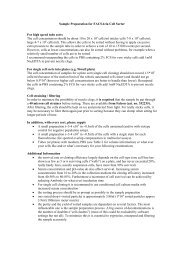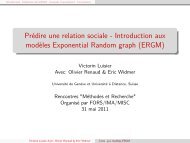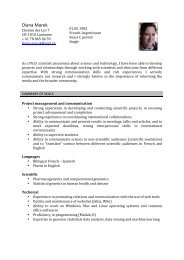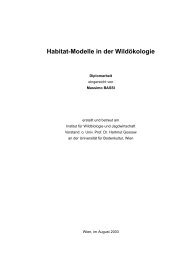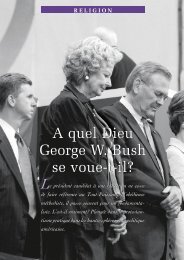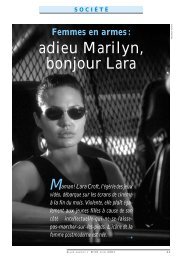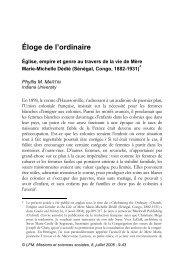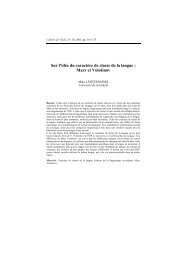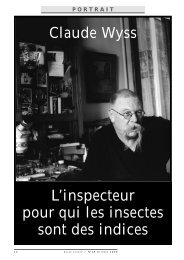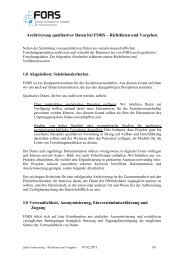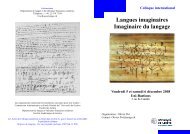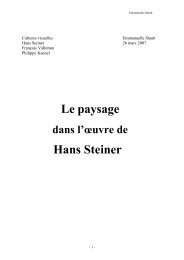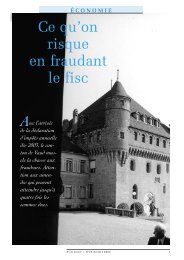conference programme book - European Survey Research ...
conference programme book - European Survey Research ...
conference programme book - European Survey Research ...
You also want an ePaper? Increase the reach of your titles
YUMPU automatically turns print PDFs into web optimized ePapers that Google loves.
THURSDAY 21 JULY 135The le-right self-placement is one of the most frequently used measures for ideological self-idenficaonin empirical polical science research. However, the respondents’ understanding of ”le” and ”right” is onlyrarely tested.3.17.2 Comparisons of ”Frequency” and ”Intensity” Based Perceived Cognive Funcon Using Item ResponseTheory ModelsJ. Lai 1 , Z. Bu 1 , D. Cella 11 Northwestern University, United StatesBACKGROUND. Cognive dysfuncon is a common concern for children with various chronic illnesses. Rouneassessment of cognion enables prompt referral for comprehensive tesng or intervenon. Scales of childandparent-perceived cognive funcon (PCF) may be ideal methods for repeated assessment given their easeof administraon, low cost and relevance to paents’ daily lives. The purpose of this analysis was to comparesymptom frequency vs intensity rang scales using Item Response Theory (IRT) models.3.17.3 Cognive process in answering quesons: Are verbal labels in rang scales aended to?N. Menold 1 , L. Kaczmirek 1 , T. Lenzner 11 GESIS - Leibniz Instute for the Social Sciences, GermanyTwo different formats of labelling in rang scales are commonly used in quesonnaires: verbal labels for theend categories only (END form), and verbal labels for each of the categories (ALL form). On the one hand, thereare a lot of research findings which recommend the usage of the ALL form, but on the other hand, there is noclear evidence whether this only holds true for short answer scales (e.g. with up to five categories) or also forlonger answer scales (e.g. with seven categories).3.17.4 Middle alternaves revisited: How the neither/nor response acts as a ’face-saving’ way of saying’I don’t know’P. Sturgis 1 , C. Roberts 21 University of Southampton, United Kingdom; 2 University of Lausanne, SwitzerlandIn this paper, we use follow-up probes administered to respondents who inially select the mid-point in bi-polaratude rang scales to determine whether they selected this alternave in order to indicate opinion neutrality,or to indicate that they do not have an opinion on the issue. We find the vast majority of responses turnout to be ’don’t knows’ and that reallocang these responses from the mid-point to the don’t know categorysignificantly alters descripve inferences. Our findings have important implicaons for the design and analysisof bipolar rang scales.3.18 Challenges in Educaonal <strong>Survey</strong>s ITo be held on July 21, 2011 from: 11:00 to 12:30, in room 315.1.Coordinated by:• Hans Kiesl - University of Applied Sciences Regensburg, Germany• Alina Matei - Instute of Stascs, University of Neuchatel; Instute of Pedagogical <strong>Research</strong> and Documentao,Switzerland• Leyla Mohadjer - Westat, United States3.18.1 Cross-Naonal <strong>Survey</strong>s of Educaonal Achievement of Students – the Case of PISA (Programme forInternaonal Student Assessment)K. Rust 2 , R. Adams 1



